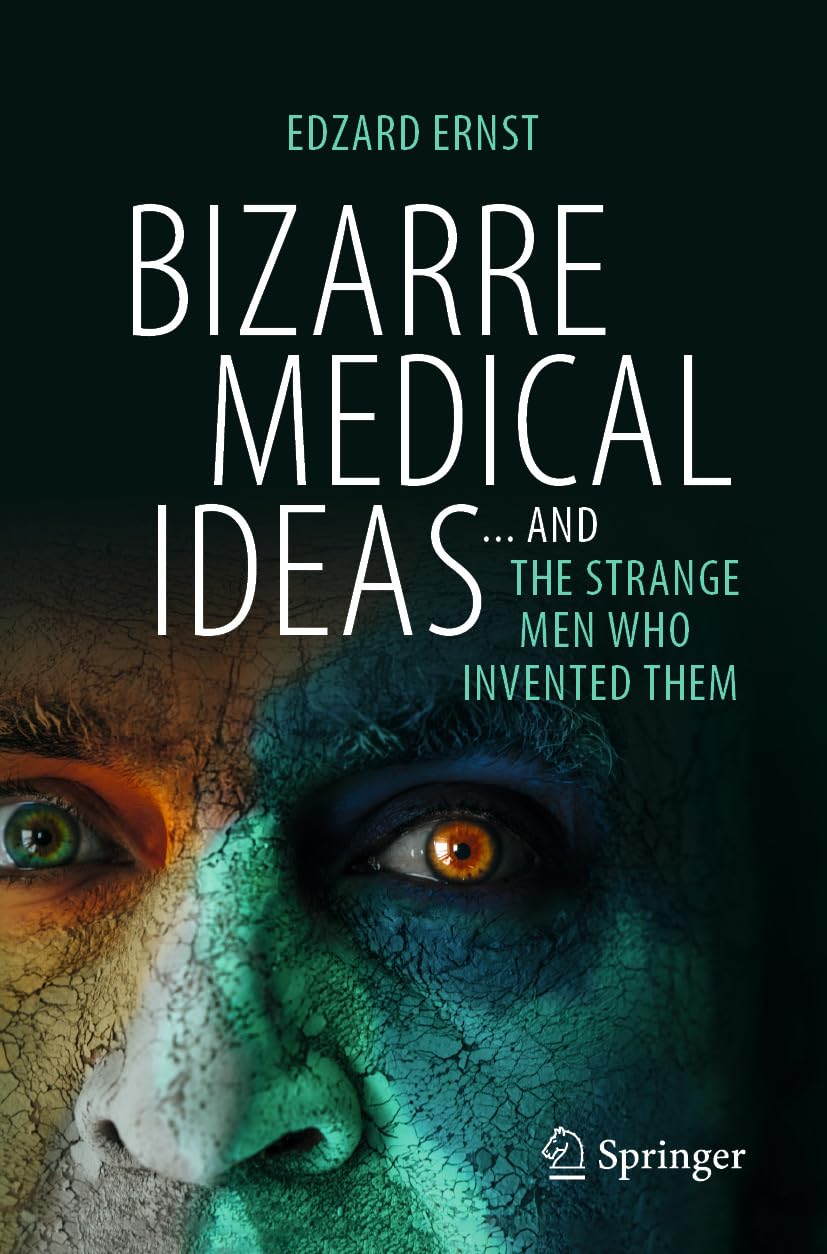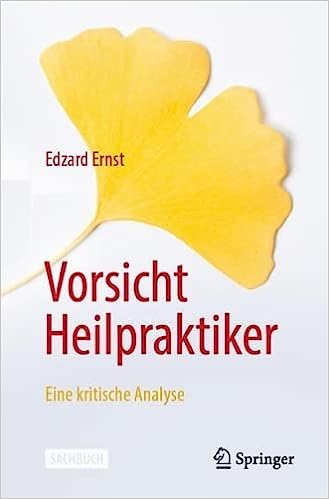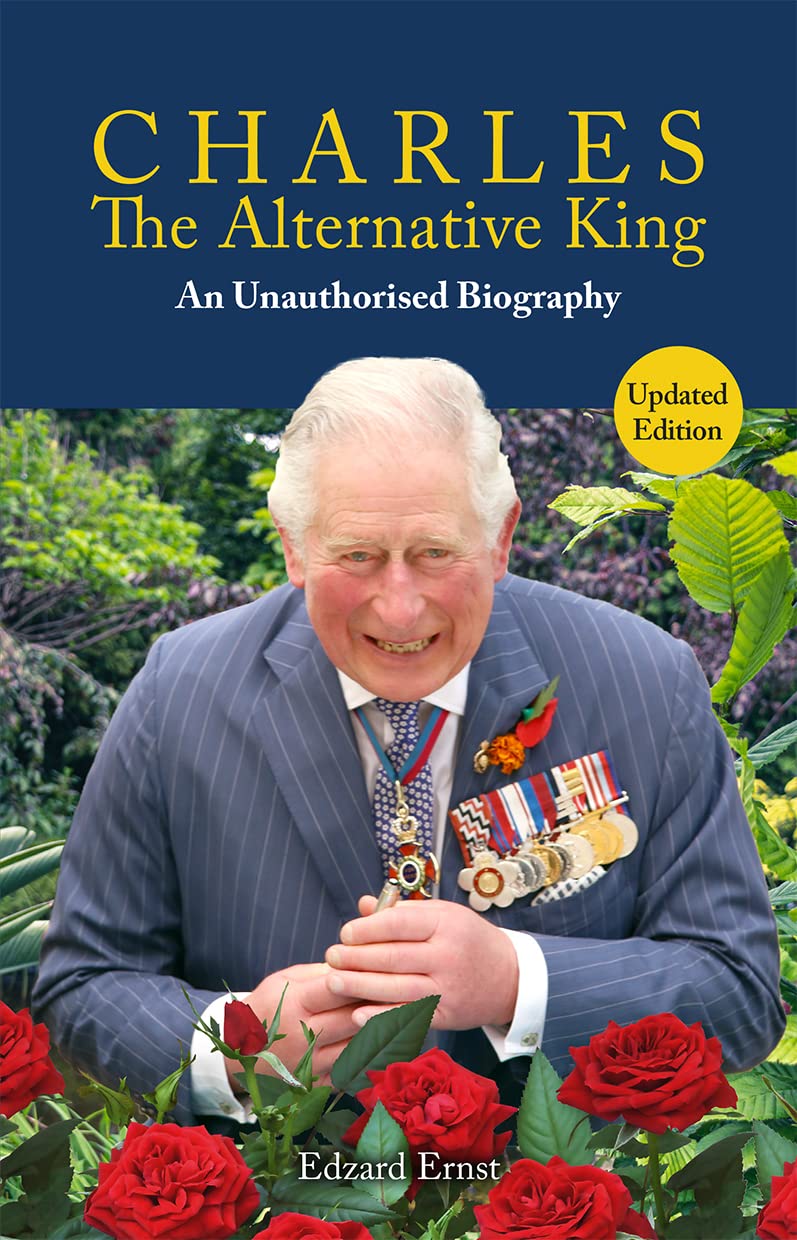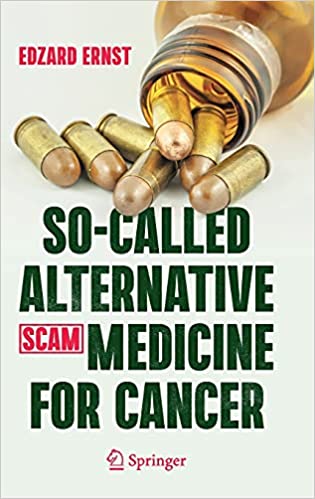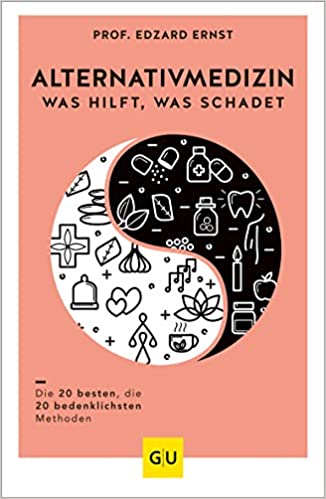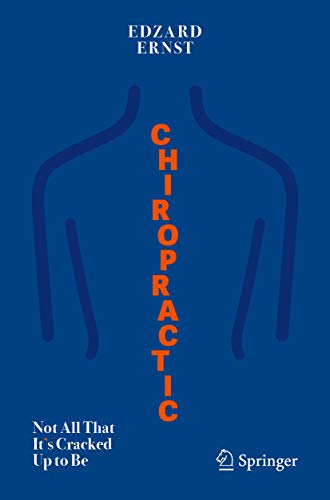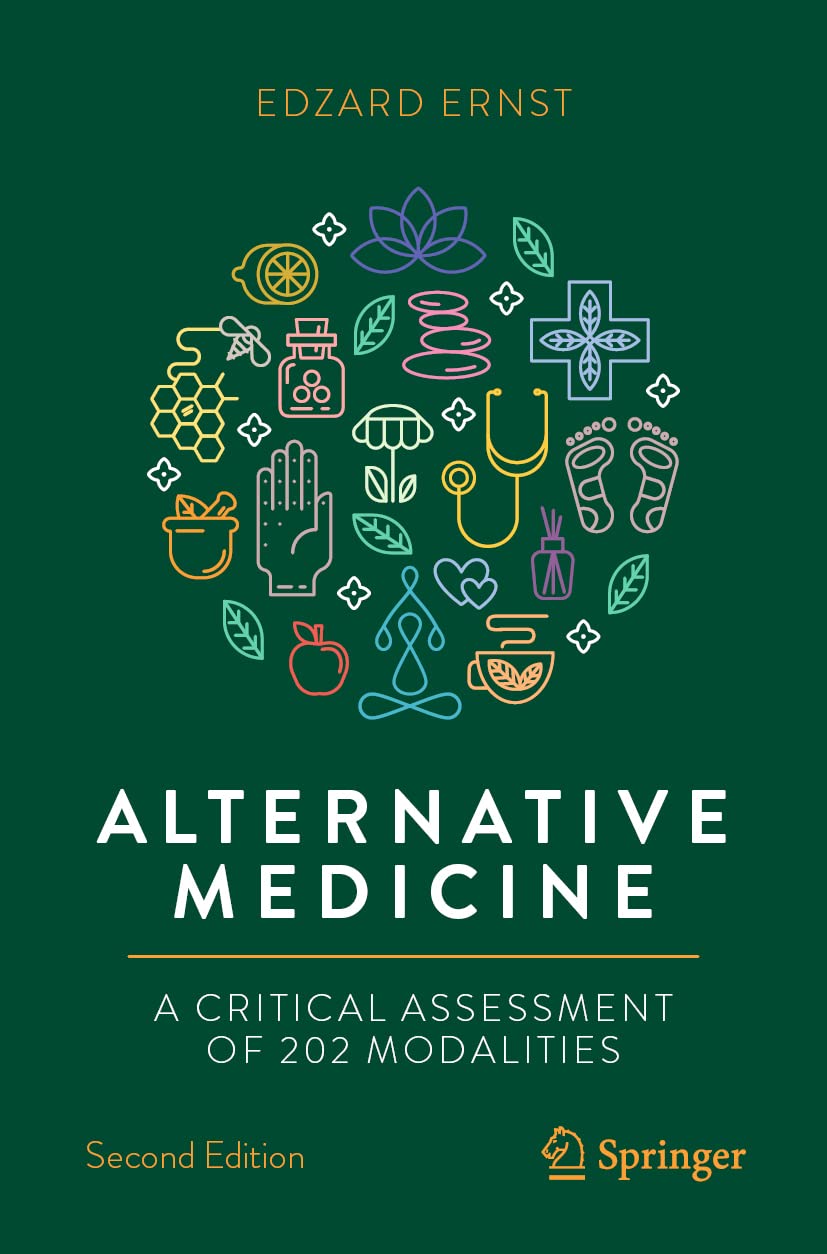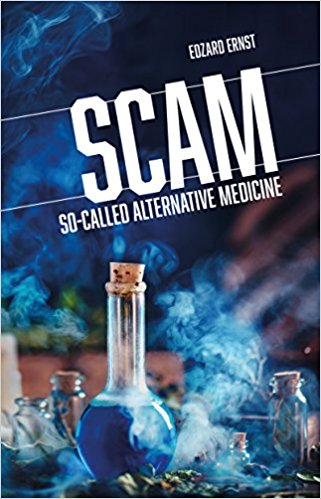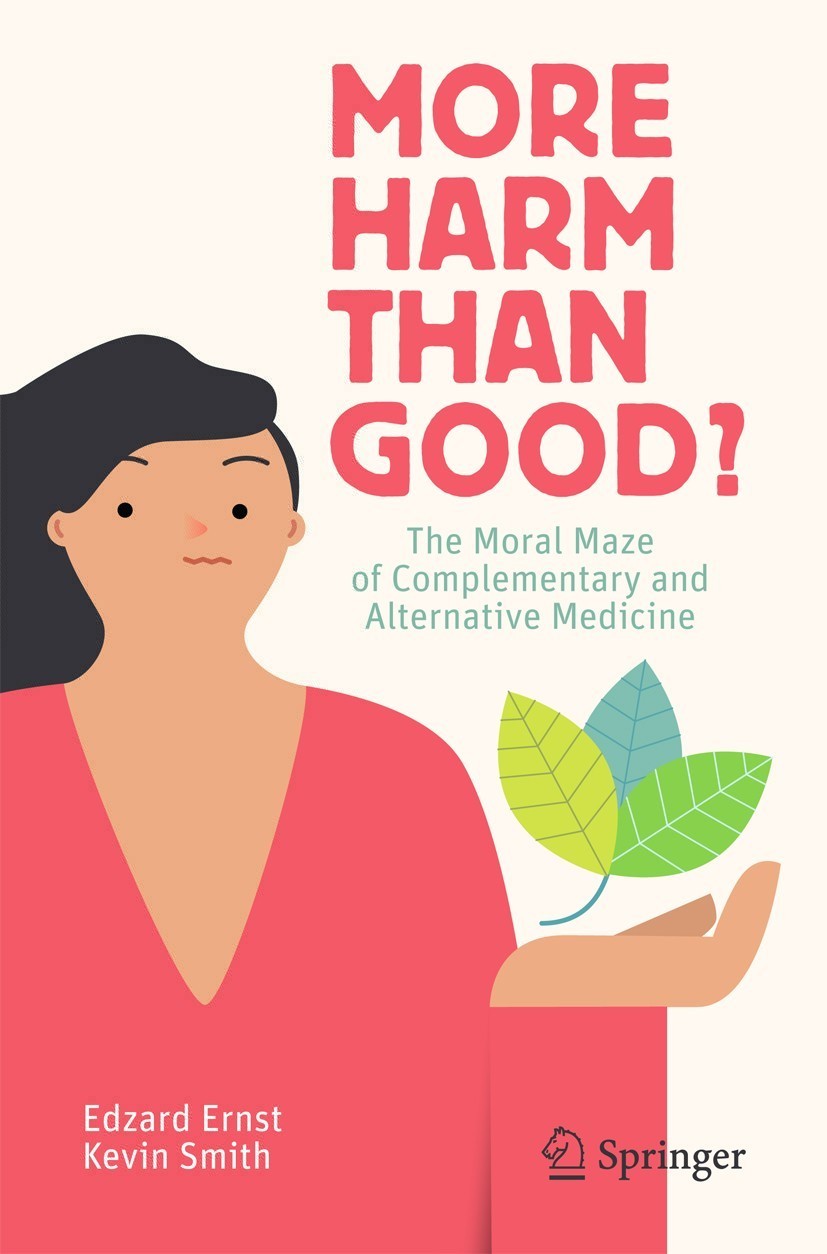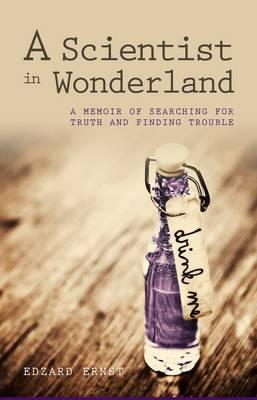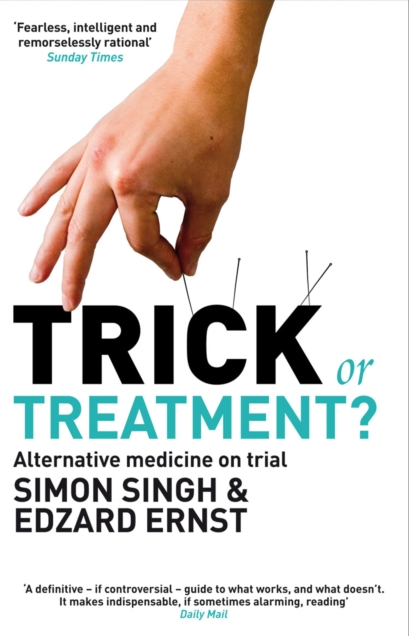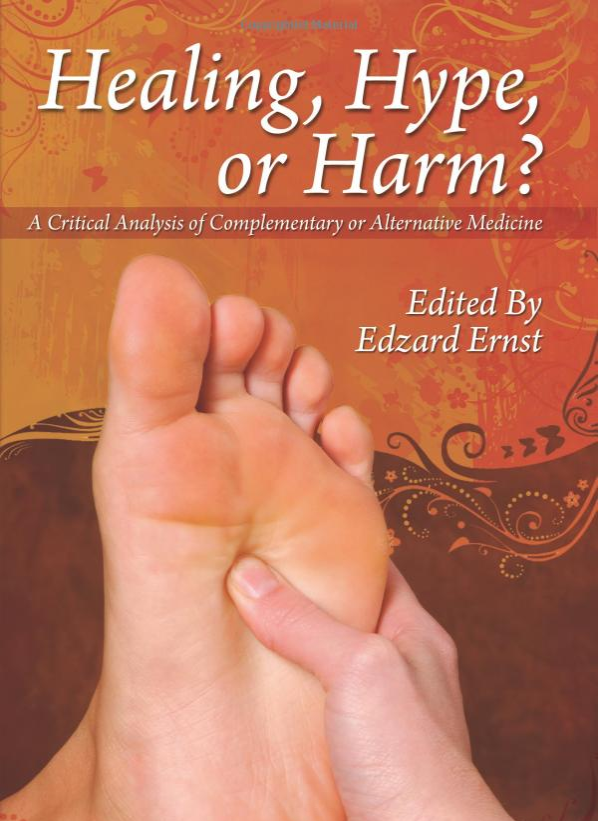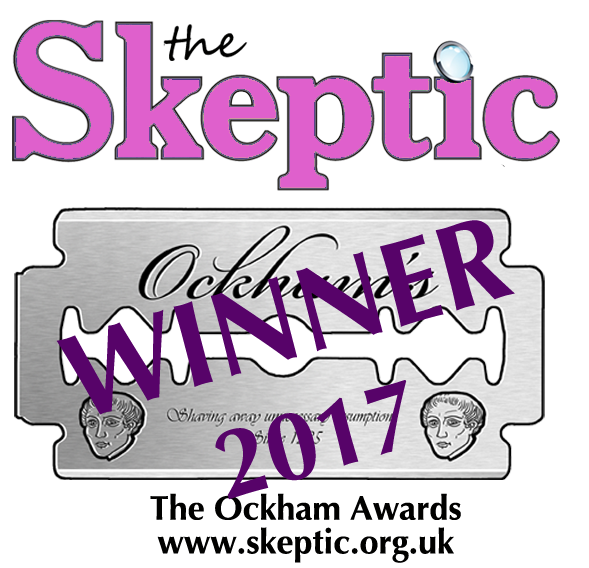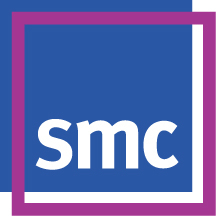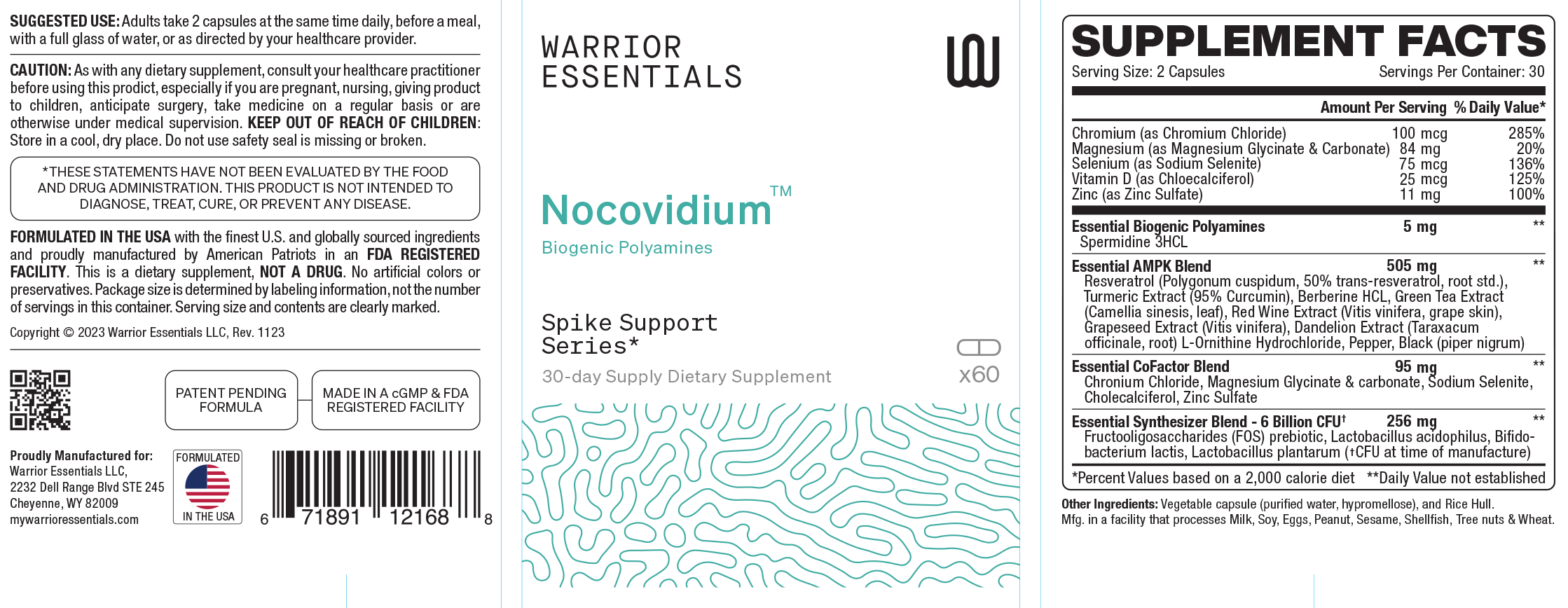It has been reported that Kash Patel, Donald Trump’s pick to lead the FBI. Patel seems to be a scary man. During 2023 appearance on Steve Bannon‘s “War Room” podcast, Patel agreed that Trump is “dead serious” about his intent to seek revenge against his political enemies should he be elected in 2024. Patel stated:
“We will go out and find the conspirators — not just in government, but in the media … we’re going to come after the people in the media who lied about American citizens, who helped Joe Biden rig presidential elections … We’re going to come after you. Whether it’s criminally or civilly, we’ll figure that out. But yeah, we’re putting you all on notice, and Steve, this is why they hate us. This is why we’re tyrannical. This is why we’re dictators … Because we’re actually going to use the Constitution to prosecute them for crimes they said we have always been guilty of but never have.”
Meanwhile, Patel has been flogging a range of very odd products aimed at the MAGA crowd, making hundreds of thousands of dollars from Trump-aligned businesses. In particular, Patel promoted pills that claim to reverse the effects of the Covid-19 vaccine. Marketed under the trademark “Nocovidium,” the pills from a company called ‘Warrior Essentials’ contain a range of ‘natural ingredients none of which has been shown to do anything significant in relation to Covid-19 or vaccines:
“Spike the Vax, order this homerun kit to rid your body of the harms of the vax,” Patel said in a Truth Social post promoting the SCAM remedy. Another advert stated: “You were immune to the propaganda, but are you immune to the shedders.”
The website explains:
“The ingredients are listed above, but they break down into a few distinct categories. Polyamines are the driving force that helps to push the body into autophagy. These are found in many foods and are also in all living organisms. Our formula is designed to give a boost of externally supplied polyamines, while also working to turn your body into a polyamine producing gigafactory. This is done by providing the body the precursors, activators, and synthesizers to ramp up production. The third goal is to inhibit pathogens, including the spike protein, from interfering with the process. It’s a 1-2-3 patent-pending punch. Every ingredient was specifically chosen and balanced for its ability to promote autophagy, polyamine production, the inhibition of factors that can stop the process, or a combination of all three.”
The website even explains how the supplement works: “With regards to the spike protein, the body identifies this as a foreign object, and the autophagy process is designed to help protect your body by completely eliminating items like the spike. Many indicators show that the spike’s ability to block this process may be why the spikes are lasting far longer in the body than anybody ever expected. Our formula was developed to counter these measures allowing the process to complete and the objects, including the spike, identified by the body for removal, to be eliminated.”
Is there any evidence?
One should not ask such probing questions!
Why not?
The answer is as simple as it is scary: “We’re going to come after you!”
- 85 were controlled trials;
- 79 of these were randomized.
There were many areas where the quality of the studies could be improved. About two-thirds of the 85 controlled trials had either high (42 percent) or unclear (24 percent) risk of bias according to internationally recognized standards for internal validity.
Of the 14 observational (cohort) studies, over one-third did not control for important confounders in the outcome analyses. Regarding external validity, adherence was reported in less than a third of studies (n=31). Forty percent of studies (79% of observational studies) did not report on safety. Regarding model validity, fewer than two-thirds of the studies were consistent with homeopathic principles.
- Iris Bell, M.D., Ph.D., University of Arizona College of Medicine (Retired) and Sonoran University of Health Sciences;
- Dan Cherkin, Ph.D., Osher Center for Integrative Health, Department of Family Medicine, University of Washington;
- Roger Chou, M.D., Department of Medical Informatics & Clinical Epidemiology and Department of Medicine, Oregon Health & Science University;
- Katharina Gaertner, MBBS, Research Faculty of Health, University Witten/Herdecke;
- Klaus Linde, M.D., Ph.D., Scientific Coordinator, Technische Universität München, Institute of General Practice and Health Services Research;
- Alexander Tournier, Ph.D., Homeopathy Research Institute and Institute of Complementary and Integrative Medicine, University of Bern;
- Esther van der Werf, M.Sc., Ph.D., Clinical Research Lead, Homeopathy Research Institute, and Honorary Senior Lecturer, Primary Care Infection, Bristol Medical School, University of Bristol;
- Harald Walach, Ph.D., CHSInstitute.
Two very obvious things should be noted about this panel:
- There are not 9 but only 8 members.
- Almost all are individuals who are pro-homeopathy, and no informed critic of homeopathy was invited.
The latter fact seems important. Anyone who has worked with panels knowns that one can pre-determine the outcome of the deliberations by the choice of the members.
The panel essentially concluded that homeopathic research could be substantially improved. Considering its highly biased composition, this is remarkable. It means that, in fact,
HOMEOPATHIC RESEARCH IS DISMAL.
Being a dedicated crook and a liar himself, Donald Trump has long had an inclination to surround himself with crooks and liars. As discussed repeatedly, this preferance naturally extends into the realm of healthcare, Some time ago, he sought the advice of Andrew Wakefield, the man who published the fraudulent research that started the myth about a causal link between MMR-vaccinations and autism.
Early November this year, Trump stated that, if he wins the election, he’ll “make a decision” about whether to outlaw some vaccines based on the recommendation of Robert F. Kennedy Jr., a notorious vaccine critic without any medical training. The president doesn’t have authority to ban vaccines but he can influence public health with appointments to federal agencies that can change recommendations or potentially revoke approvals.
Now that he did win the election, Trump suggested that Robert F. Kennedy Jr., his pick to run Health and Human Services, will investigate supposed links between autism and childhood vaccines, a discredited connection that has eroded trust in the lifesaving inoculations.
“I think somebody has to find out,” Trump said in an exclusive interview with “Meet the Press” moderator Kristen Welker. Welker noted in a back-and-forth that studies have shown childhood vaccines prevent about 4 million deaths worldwide every year, have found no connection between vaccines and autism, and that rises in autism diagnoses are attributable to increased screening and awareness.
Trump, too stupid to know the difference between correlation and causation, replied: “If you go back 25 years ago, you had very little autism. Now you have it.” “Something is going on,” Trump added. “I don’t know if it’s vaccines. Maybe it’s chlorine in the water, right? You know, people are looking at a lot of different things.” It was unclear whether Trump was referring to opposition by Kennedy and others to fluoride being added to drinking water.
Kennedy, the onetime independent presidential candidate who backed Trump after leaving the race, generated a large following through his widespread skepticism of the American health care and food system. A major component of that has been his false claims linking autism to childhood vaccinations. Kennedy is the founder of a prominent anti-vaccine activist group, Children’s Health Defense. The agency Trump has tasked him with running supports and funds research into autism, as well as possible new vaccines.
The debunked link between autism and childhood vaccines, particularly the inoculation against mumps, measles and rubella, was first claimed in 1998 by Andrew Wakefield who was later banned from practicing medicine in the UK. His research was found to be fraudulent and was subsequently retracted. Hundreds of studies have found childhood vaccines to be safe.
Autism diagnoses have risen from about 1 in 150 children in 2000 to 1 in 36 today. This rise has been shown to be due to increased screening and changing definitions of the condition. Strong genetic links exist to autism, and many risk factors occurring before birth or during delivery have been identified.
If Trump does, in fact, ‘outlaw’ certain vaccinations, he would endanger the health of the US as well as the rest of the world. Will he really be that stupid?
We had to deal with Hongchi Xiao several times before:
- Slapping therapy? No thanks!
- China Power and Influence
- Slapping therapy: therapist arrested and charged with manslaughter by gross negligence
Slapping therapy is based on the notion that slapping patients at certain points of their body has positive therapeutic effects. Hongchi Xiao, a Chinese-born investment banker, popularised this SCAM which, he claims, is based on the principles of Traditional Chinese Medicine. It is also known as ‘Paida’—in Chinese, this means ‘to slap your body’. The therapy involves slapping the body surface with a view of stimulating the flow of ‘chi’, the vital energy postulated in Traditional Chinese Medicine. Slapping therapists believe that this ritual restores health and eliminates toxins. They also claim that the bruises which patients tend to develop after the treatment are the visible signs of toxins coming to the surface. Hongchi Xiao advocates slapping as “self-healing method” that should be continued until the skin starts looking bruised. He and his follows conduct workshops and sell books teaching the public which advocate slapping therapy as a panacea, a cure-all. The assumptions of slapping therapy fly in the face of science and are thus not plausible. There is not a single clinical trial testing whether slapping therapy is effective. It must therefore be categorised as unproven.
Now it has been reported that Hongchi Xiao has been sentenced to 10 years in prison for the death of a 71-year-old diabetic woman who stopped taking insulin during one of his workshops.
Hongchi Xiao, 61, was convicted of manslaughter by gross negligence for failing to get medical help for Danielle Carr-Gomm as she howled in pain and frothed at the mouth during the fourth day of a workshop in October 2016. The Californian healer promoted paida lajin therapy which entails getting patients to slap themselves repeatedly to release “poisonous waste” from the body. The technique has its roots in Chinese medicine and has no scientific basis and patients often end up with bruises, bleeding — or worse.
Xiao had extradited from Australia, where he had been convicted of manslaughter after a 6-year-old boy died when his parents withdrew his insulin medication after attending one of his workshops in Sydney. “I consider you dangerous even though you do not share the characteristics of most other dangerous offenders,” Justice Robert Bright said during sentencing at Winchester Crown Court. “You knew from late in the afternoon of day one of the fact that Danielle Carr-Gomm had stopped taking her insulin. Furthermore, you made it clear to her you supported this.” Bright added Xiao only made a “token effort” to get Carr-Gomm to take her insulin once it was too late and had shown no sign of remorse as he even continued to promote paida lajin in prison.
Carr-Gomm was diagnosed with type 1 diabetes in 1999 and was desperate to find a cure that didn’t involve injecting herself with needles, her son, Matthew, said. She sought out alternative treatments and had attended a previous workshop by Xiao in Bulgaria a few months before her death in which she also became seriously ill after ceasing her medication. However, she recorded a video testimonial, calling Xiao a “messenger sent by God” who was “starting a revolution to put the power back in the hands of the people to cure themselves and to change the whole system of healthcare.”
Xiao had congratulated Carr-Gomm when she told other participants at the English retreat that she had stopped taking her insulin. By day three, Carr-Gomm was “vomiting, tired and weak, and by the evening she was howling in pain and unable to respond to questions,” prosecutor Duncan Atkinson said.
A chef who wanted to call an ambulance said she deferred to those with holistic healing experience. “Those who had received and accepted the defendant’s teachings misinterpreted Mrs. Carr-Gomm’s condition as a healing crisis,” Atkinson said.
______________
A healing crisis?
A crisis of collective stupidity, I’d say!
In this case study, the authors describe an adult patient who struggled with persistent warts on the plantar surface of the foot for several years. All medical therapies were exhausted, so the patient turned to medical hypnosis as a last resort.
The patient experienced complete resolution of all his warts after three sessions of medical hypnosis. The suggestions used in the treatment included:
- strengthening the immune system,
- increasing blood flow in the foot,
- visualizing immune mechanisms destroying infected cells,
- the regrowth of healthy tissue.
After 3 years, the authors are still in contact with the patient, and he reports no recurrence of the disease.
The authors concluded that this case report adds to the existing body of the literature supporting the use of medical hypnosis in the treatment of warts. It demonstrates that medical hypnosis can be a valuable complementary or alternative treatment option for patients with persistent warts who have not responded to conventional therapies. It also highlights the need for further research to better understand the mechanisms by which hypnosis influences the resolution of warts and to identify the most effective types of suggestions for treatment.
Oh, dear!
Warts are viral infections. They can persist for months and years and disappear suddenly without apparent reason. What the authors of this case report observed is exactly this phenomenon of spontaneous recovery. There is no sound evidence that hypnotherapy or any similar treatment will speed up the disappearance of warts.
Many years ago, we did a trial of ‘distant healing’ for warts. It confirmed the ineffectiveness of this approach:
Purpose: Distant healing, a treatment that is transmitted by a healer to a patient at another location, is widely used, although good scientific evidence of its efficacy is sparse. This trial was aimed at assessing the efficacy of one form of distant healing on common skin warts.
Subjects and methods: A total of 84 patients with warts were randomly assigned either to a group that received 6 weeks of distant healing by one of 10 experienced healers or to a control group that received a similar preliminary assessment but no distant healing. The primary outcomes were the number of warts and their mean size at the end of the treatment period. Secondary outcomes were the change in Hospital Anxiety and Depression Scale and patients’ subjective experiences. Both the patients and the evaluator were blinded to group assignment.
Results: The baseline characteristics of the patients were similar in the distant healing (n = 41) and control groups (n = 43). The mean number and size of warts per person did not change significantly during the study. The number of warts increased by 0.2 in the healing group and decreased by 1.1 in the control group (difference [healing to control] = -1.3; 95% confidence interval = -1.0 to 3.6, P = 0.25). Six patients in the distant healing group and 8 in the control group reported a subjective improvement (P = 0.63). There were no significant between-group differences in the depression and anxiety scores.
Conclusion: Distant healing from experienced healers had no effect on the number or size of patients’ warts.
My conclusion of the above case study is therefore very different from that of the original authors:
This case report adds nothing to the existing body of the literature on medical hypnosis or on the treatment of warts other than misleading the public.
Attention Deficit Hyperactivity Disorder (ADHD) is a common neurodevelopmental condition affecting children
and adults, characterized by symptoms of inattention, hyperactivity, and impulsivity. Despite the effectiveness of conventional treatments, such as stimulants, side effects drive interest in alternative therapies like homeopathy. This systematic review was aimed at determining the effectiveness of homeopathy as a treatment for ADHD.
A comprehensive search of PubMed, SCOPUS, and Google Scholar was conducted to identify clinical studies evaluating homeopathic treatments for ADHD. After applying selection criteria, eight studies were reviewed, consisting of randomized controlled trials, comparative studies, randomized open-label Pilot study, and clinical trials, were included in the final review.
The results suggest that some homeopathic treatments showed potential in reducing ADHD symptoms, particularly inattention and hyperactivity.
The authors concluded that homeopathy, particularly individualized treatment, shows promise as an adjunct or alternative treatment for ADHD, especially for those children whose caregivers seek alternatives to stimulant medications. Studies report that homeopathic treatment can significantly improve ADHD symptoms in some children, particularly when the correct remedy is identified. However, the evidence is mixed, with several studies showing improvements that may be attributable to the consultation process rather than the remedy itself. Given the increasing interest in Complementary and Alternative Medicine (CAM) among parents of children with ADHD, homeopathy may provide a valuable therapeutic option. Nevertheless, larger, more rigorous trials are required to confirm these findings and establish clear guidelines for its use in clinical practice. The potential for homeopathy to serve as an adjunct to conventional treatments, especially for younger patients or those intolerant to stimulants, remains an area worthy of further exploration.
What journal publishes such misleading drivel? It’s the African Journal of biomedical Research. No, I also had never heard of it! And who are the authors of this paper, their titles and affiliations? Here they are:
- Professor & HOD, Department of Anatomy, Dr. D.Y. Patil Homoeopathic Medical College & Research Centre, Dr. D.Y. Patil Vidyapeeth (Deemed to be University), Pimpri, Pune, Maharashtra, India,
- Professor & HOD, Department of Homoeopathic Pharmacy, Dr. D.Y. Patil Homoeopathic Medical College &
Research Centre, Dr. D.Y. Patil Vidyapeeth (Deemed to be University), Pimpri, Pune, Maharashtra, India, - Department of Homoeopathic Pharmacy, Dr. D.Y. Patil Homoeopathic Medical College & Research Centre, Dr. D.Y. Patil Vidyapeeth (Deemed to be University), Pimpri, Pune, Maharashtra, India,
- Department of Homoeopathic Pharmacy, Dr. D.Y. Patil Homoeopathic Medical College & Research Centre, Dr. D.Y. Patil Vidyapeeth (Deemed to be University), Pimpri, Pune, Maharashtra, India,
- Principal, Professor & HOD, Department of Forensic Medicine and Toxicology, Dr. D.Y. Patil Homoeopathic
Medical College & Research Centre, Dr. D.Y. Patil Vidyapeeth (Deemed to be University), Pimpri, Pune,
Maharashtra, India.
Five guys with the same name?
No, one chap with 5 rather pomopous titles!
And what is wrong with this ‘systematic review’?
Everything!
It has almost none of the qualities that render a paper a systematic review. Foremost, it does not account for the quality of the primary studies – the most reliable show no effect!
Therefore, I’d like to re-phrase and shorten the conclusions as follows:
There is no reliable evidence to shoe that homeopathy is effective for ADHD.
More reason to worry about our royal family? Apparently, Camilla (I apologise for calling her thus, as I am never entirely sure whether she is Queen or Queen Consort: Camilla, the wife of Prince Charles, will be formally known as Queen Consort now that her husband is King12. When Camilla and Charles married in a civil ceremony in 2005, it was announced Camilla would become known as Princess Consort – rather than Queen Consort – due to public sensitivity3. However, Queen Elizabeth II granted her the title of Queen Consort in February last year during the Platinum Jubilee45.) has been urged to take more time to recover after a bout of pneumonia.
At the start of November it was announced that she had been diagnosed with a ‘chest infection’ and was under doctors’ supervision. The 77-year-old Camilla was forced to withdraw from her engagements so she could rest at home. She has now revealed that she was suffering from a form of pneumonia.
It is understood Camilla’s condition was viral. She seems to be suffering significantly diminished reserves of energy following her chest infection. This led to her having to pull out of a number of events over recent weeks. Even though the lung infection has now cleared, she says she is still feeling tired. She has been advised by her doctors to take more time to recover. It was confirmed yesterday on the eve of the state visit that the Queen was also reducing her role at the glam state banquet later on Dec. 3 in light of her health.
So, is there anything special that might have triggered this unfortunate turn of events? To answer this question, I refer you to my post of 31 October this year:
… King Charles arrived in Bengaluru directly from Samoa, where he attended the 2024 Commonwealth Heads of Government Meeting from October 21-26. His visit to Bengaluru was strictly kept under wraps, and he was directly taken to Soukya International Holistic Health Centre (SIHHC), where he was also joined by his wife, Camilla.
According to sources, the couple’s day begins with a morning yoga session, followed by breakfast and rejuvenation treatment before lunch. After a brief rest, a second round of therapies follows, ending with a meditation session before dinner and lights out by 9 pm. They have been enjoying long walks around the campus, visiting the organic farm and cattle shed. Considering the high-profile secret visit, a high-security ring was thrown around SIHHC.
The health centre, founded by Dr. Issac Mathai, is located in Samethanahalli, Whitefield, on Bengaluru’s outskirts. This integrative medical facility combines traditional systems of medicine, including Ayurveda, Homoeopathy, Yoga, and Naturopathy, along with over 30 complementary therapies like reflexology, acupuncture, and dietetics.
… The royal couple has earlier taken wellness treatments, including anti-ageing, detoxification and rejuvenation. On November 14, 2019, the couple celebrated the then Prince Charles’ 71st birthday at SIHHC, an event that attracted a lot of publicity, unlike this visit.
Yes, you may well ask: isn’t Ayurvedic medicine supposed:
- to strengthen the immune system,
- to fortify you against infections,
- to replenish your reserves of energy,
- to enable you to recover swiftly from infections?
Of course, I know, correlation is not causation! Perhaps the recent Ayurvedic pampering in India and Camilla’s inability to make a timely recovery from what started merely as a ‘chest infection’ are not at all linked in any way. Yet, it does seem tempting to speculate that the stay in the SIHHC with all the Ayurvedic medicine did her not a lot of good.
Whatever might be the case, I would like to take this opportunity to wish Camilla a full recovery for her condition.
The ‘Healy’ has featured on this blog before and is thus known to my regulars: The ‘Healy’: deep cellular healing with quantum bollocks. Now the ‘Healy’ has won an award … albeit a negative one: the Austrian Skeptiks necative prize ‘GOLDENES BRETT VORM KOPF’ (Golden Plank before the Head)
Other nomineed for the award were:
- The broadcaster AUF1 TV, which has been categorised as right-wing extremist.
- The Austrian Veterinary Association known to support homeopathy for animals.
At yesterday’s gala in the Vienna City Hall, it was announced that the ‘Healy’ is the proud winner.
A total of 160 nominations were received by the Vienna Sceptics (Gesellschaft für kritisches Denken, GkD), which awards the prize on behalf of the Gesellschaft zur Wissenschaftlichen Untersuchung von Parawissenschaften (GWUP). On the basis of all these nominations, a ‘shortlist’ of three was subsequently agreed upon by the jury.
The organisers explained in their press release that the ‘Healy’ is advertised as a medical device for the treatment of pain, including chronic pain and migraines, as well as for the supportive treatment of mental illnesses such as depression and anxiety with a lot of pseudo-scientific phraseology.
A ‘quantum sensor’ allegedly measures the ideal ‘frequency’ of the user and causes a ‘bioenergetic field harmonisation’. However, the ‘quantum sensor’ turns out to be nothing more than a simple infrared diode, available for 20 cents. By contrast, consumers are asked to pay up to 4,500 Euros for the ‘Healy’!
Several research platforms, medical information portals and consumer centres have come to damning conclusions about the device. There is talk of ‘bioresonance scams’, ‘dubious frequency therapy’ for which there is a lack of scientific evidence and an ‘esoteric scam’. In addition to the considerable commercial interest and widespread use, the jury said that the manufacturer’s way of dealing with critics was also decisive for the win.
Having recently favoured the Austrian Veterinary Association (AVA) to win the award, I am in two minds. On the one hand, I am disappointed that the AVA did not make it. On the other hand, having reported about the ‘Healy’s extraordinary quantum bollocks some time ago, I am delighted that a worthy winner has been found and crowned.
This update of a systematic review evaluated the effectiveness of spinal manipulations as a treatment for migraine headaches.
Amed, Embase, MEDLINE, CINAHL, Mantis, Index to Chiropractic Literature, and Cochrane Central were searched from inception to September 2023. Randomized clinical trials (RCTs) investigating spinal manipulations (performed by various healthcare professionals including physiotherapists, osteopaths, and chiropractors) for treating migraine headaches in human subjects were considered. Other types of manipulative therapy, i.e., cranial, visceral, and soft tissue were excluded. The Grading of Recommendations Assessment, Development, and Evaluation (GRADE) approach was used to evaluate the certainty of evidence.
Three more RCTs were published since our first review; amounting to a total of 6 studies with 645 migraineurs meeting the inclusion criteria. Meta-analysis of six trials showed that, compared with various controls (placebo, drug therapy, usual care), SMT (with or without usual care) has no superior effect on migraine intensity/severity measured with a range of instruments (standardized mean difference [SMD] − 0.22, 95% confidence intervals [CI] − 0.65 to 0.21, very low certainty evidence), migraine duration (SMD − 0.10; 95% CI − 0.33 to 0.12, 4 trials, low certainty evidence), or emotional quality of life (SMD − 14.47; 95% CI − 31.59 to 2.66, 2 trials, low certainty evidence) at post-intervention. A meta-analysis of two trials showed that compared with various controls, SMT (with or without usual care) increased the risk of adverse effects (risk ratio [RR] 2.06; 95% CI 1.24 to 3.41, numbers needed to harm = 6; very low certainty evidence). The main reasons for downgrading the evidence were study limitations (studies judged to be at an unclear or high risk of bias), inconsistency (for pain intensity/severity), imprecision (small sizes and wide confidence intervals around effect estimates) and indirectness (methodological and clinical heterogeneity of populations, interventions, and comparators).
We cocluded that the effectiveness of SMT for the treatment of migraines remains unproven. Future, larger, more rigorous, and independently conducted studies might reduce the existing uncertainties.
The only people who might be surprised by these conclusions are chiropractors who continue to advertise and use SMT to treat migraines. Here are a few texts by chiropractors (many including impressive imagery) that I copied from ‘X’ just now (within less that 5 minutes) to back up this last statement:
- So many people are suffering with Dizziness and migraines and do not know what to do. Upper Cervical Care is excellent at realigning the upper neck to restore proper blood flow and nerve function to get you feeling better!
- Headache & Migraine Relief! Occipital Lift Chiropractic Adjustment
- Are migraines affecting your quality of life? Discover effective chiropractic migraine relief at…
- Neck Pain, Migraine & Headache Relief Chiropractic Cracks
- Migraine Miracle: Watch How Chiropractic Magic Erases Shoulder Pain! Y-Strap Adjustments Unveiled
- Tired of letting migraines control your life? By addressing underlying issues and promoting spinal health, chiropractors can help reduce the frequency and severity of migraines. Ready to experience the benefits of chiropractic for migraine relief?
- Did you know these conditions can be treated by a chiropractor? Subluxation, Back Pain, Chronic Pain, Herniated Disc, Migraine Headaches, Neck Pain, Sciatica, and Sports Injuries.
- When a migraine comes on, there is not much you can do to stop it except wait it out. However, here are some holistic and non-invasive tips and tricks to prevent onset. Check out that last one! In addition to the other tips, chiropractic care may prevent migraines in your future!
Evidence-based chiropractic?
MY FOOT!
As long as I can remember, the ‘Austrian ‘Chamber of Veterinarian Medicine’ (CVM) has been a staunch supporter of homeopathy. If anyone doubts this statement, he/she should perhaps have a look at the three courses the CVM offered during the last month alone:
| Datum | PLZ, Ort | Titel |
|---|---|---|
| 05.11.2024 | 123 online | Vortragsreihe Teil 1 – Allgemeine Homöopathie |
| 19.11.2024 | 123 online | Vortragsreihe Teil 2- Allgemeine Homöopathie |
| 23.11.2024 | 9313 St. Georgen am Längsee | EAVH-Grundausbildung Veterinärhomöopathie Modul 11 |
It thus stands to reason that the CVM has been nominated for this year’s satirical award “Goldenes Brett vorm Kopf” (Golden Plank in Front of the Head). You might remember that I reported about this rather hilarious award before when in 2017, it was given to the ‘German Association of Doctor-Homeopaths’
Sadly, the CVM seems somewhat displeased with the nomination and argues that homeopathy is ‘a legally recognised speciality in veterinary practice, and training to become a veterinarian homeopath is an officially recognised and legally enshrined specialisation’. In addition, the CVM insists that the Austrian Supreme Court has ‘clarified in several judgements that homeopathy cannot be classified as pseudoscience’.
Moreover, the CVM rejects the claim that it threatened critics of homeopathywith legal action and states that it attaches ‘great importance to upholding professional ethics’ and considers ‘collegiality, respect and the avoidance of exposure’ to be key principles.
On the CVM’s website, we also find the following statement (my translation):
“Homeopathy has been used worldwide for more than 200 years. Since then, it has not only proven its worth in the treatment of humans, but has also been successfully used in livestock and domestic animal husbandry.”
The people in charge of the CVM are evidently not keen readers of my blog. If they had shown a little interest in the actual evidence, they would have realised that veterinary homeopathy is bogus that often borders on animal abuse, e.g.:
- Veterinary homeopathy is without effect … but not without risk.
- Post hoc ergo homeopathy – the sad story of homeopathically mistreated penguins
- Homeopathy for canine oral papillomatosis: a ‘proof’ that homeopathy works?
- SCAM for animals. Part 1: homeopathy
- Good news regarding homeopathy for animals: RCVS POSITION ON CAM
- Homeopathy for bovine mastitis? HOW MUCH MORE EVIDENCE IS NEEDED BEFORE HOMEOPATHS ABANDON THEIR BOGUS CLAIM?
- A new RCT tests homeopathy in cats … and the results are unsurprisingly negative
- And again: no good evidence that homeopathy works in animals
- Homeopathy as a way of reducing antibiotic use in livestock ?
- Homeopathy works for animals – so it can’t be a placebo!
- So-called alternative medicine (SCAM) for animals is not evidence-based and borders on animal abuse
- Homeopathic Arnica more than trebles the length of analgesia in dogs – SHOULD WE BELIEVE IT?
The final winner of the ‘award’ will be announced at the award ceremony on Monday (2 December) in Vienna. We will see whether the CVM is victorious in obtaining this year’s award. There is – as always – fierce competition. For my part, I feel that merely the CVM’s reaction to getting nominated renders them a well-deserving winner.
Fingers crossed!
